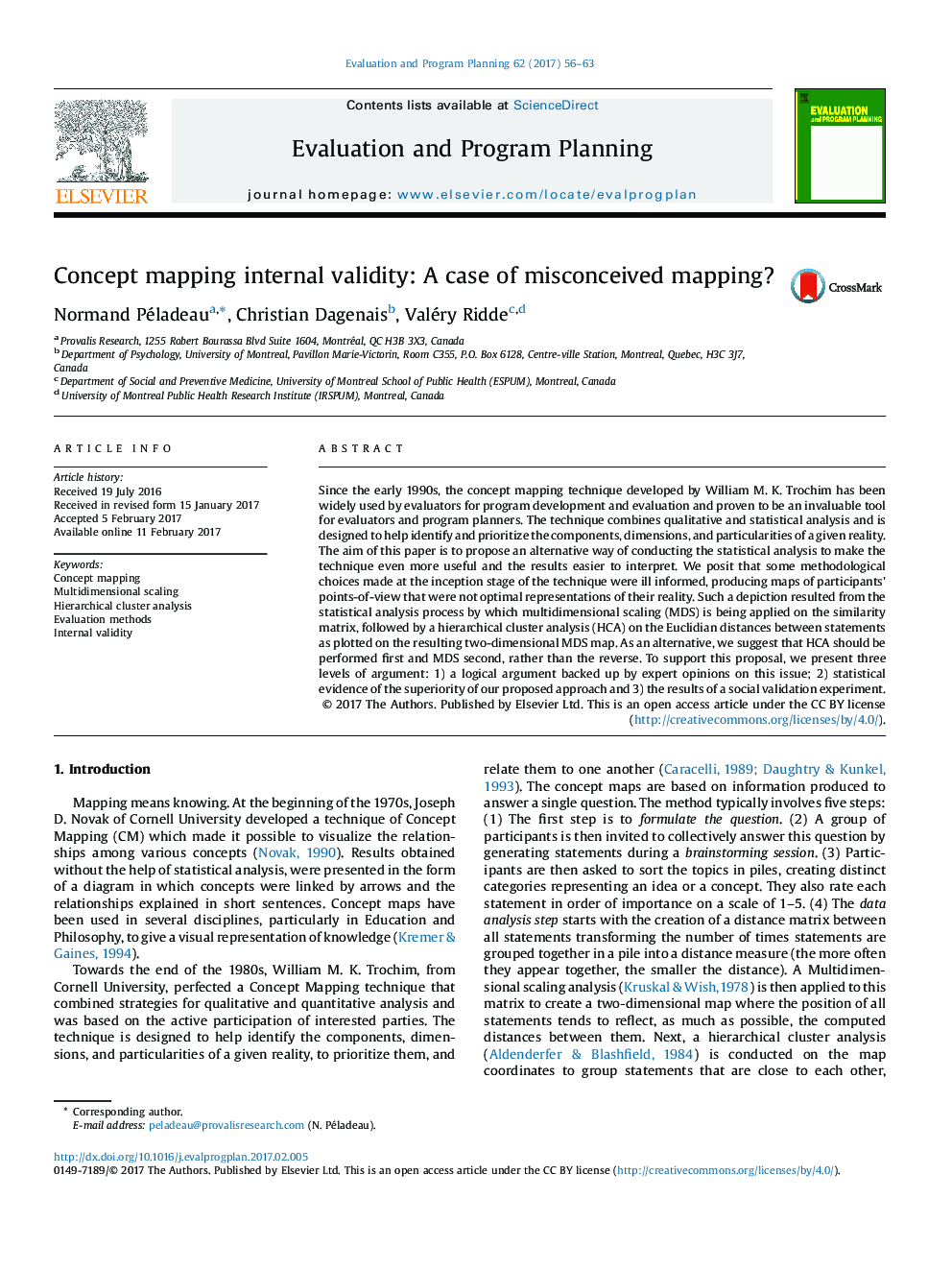| کد مقاله | کد نشریه | سال انتشار | مقاله انگلیسی | نسخه تمام متن |
|---|---|---|---|---|
| 4930999 | 1432707 | 2017 | 8 صفحه PDF | دانلود رایگان |
- The concept mapping procedure proposed by Trochim (1989) has been proved as an invaluable method for program evaluators.
- The way statistical processing concept mapping was initially conceived and is still being done today is less than optimal.
- Three arguments are brought to demonstrate that the adjustment suggested to concept mapping is more than justified.
- We recommend creating clusters of statements by applying hierarchical cluster analysis on the original co-occurrence measures.
Since the early 1990s, the concept mapping technique developed by William M. K. Trochim has been widely used by evaluators for program development and evaluation and proven to be an invaluable tool for evaluators and program planners. The technique combines qualitative and statistical analysis and is designed to help identify and prioritize the components, dimensions, and particularities of a given reality. The aim of this paper is to propose an alternative way of conducting the statistical analysis to make the technique even more useful and the results easier to interpret. We posit that some methodological choices made at the inception stage of the technique were ill informed, producing maps of participants' points-of-view that were not optimal representations of their reality. Such a depiction resulted from the statistical analysis process by which multidimensional scaling (MDS) is being applied on the similarity matrix, followed by a hierarchical cluster analysis (HCA) on the Euclidian distances between statements as plotted on the resulting two-dimensional MDS map. As an alternative, we suggest that HCA should be performed first and MDS second, rather than the reverse. To support this proposal, we present three levels of argument: 1) a logical argument backed up by expert opinions on this issue; 2) statistical evidence of the superiority of our proposed approach and 3) the results of a social validation experiment.
Journal: Evaluation and Program Planning - Volume 62, June 2017, Pages 56-63
